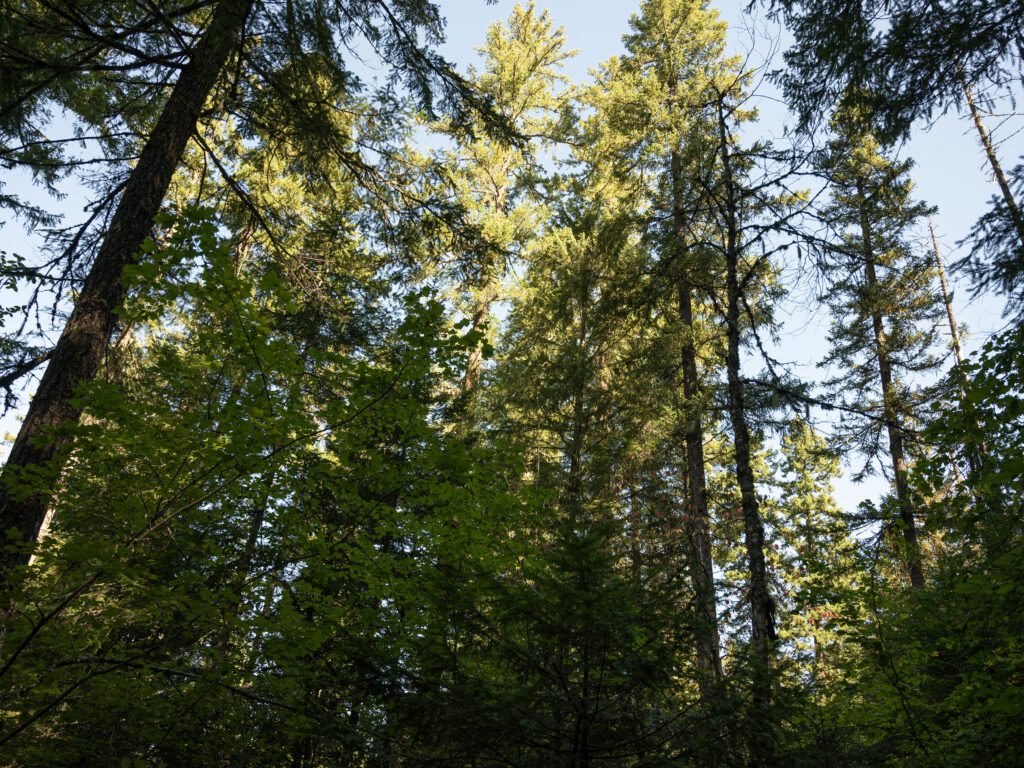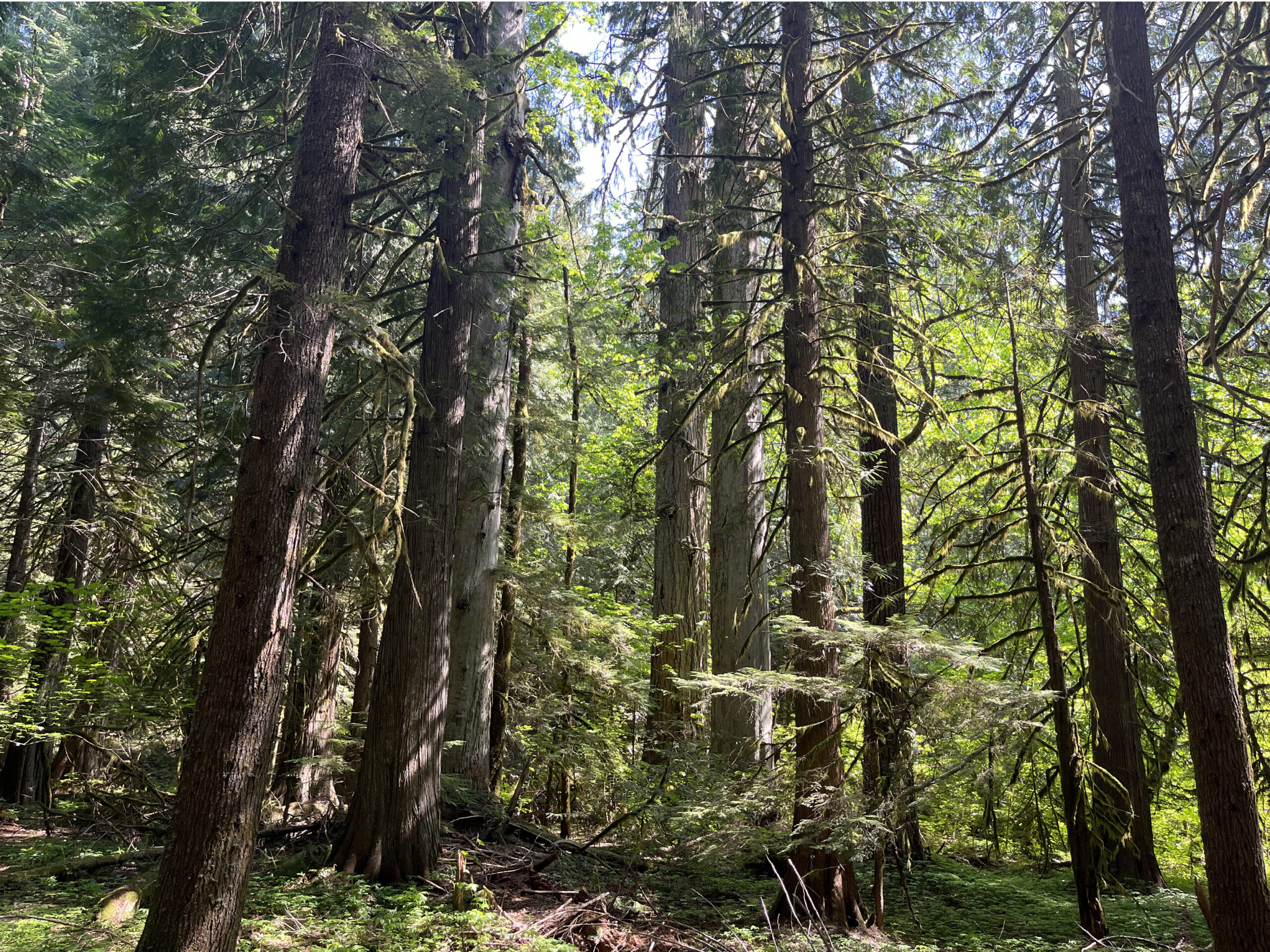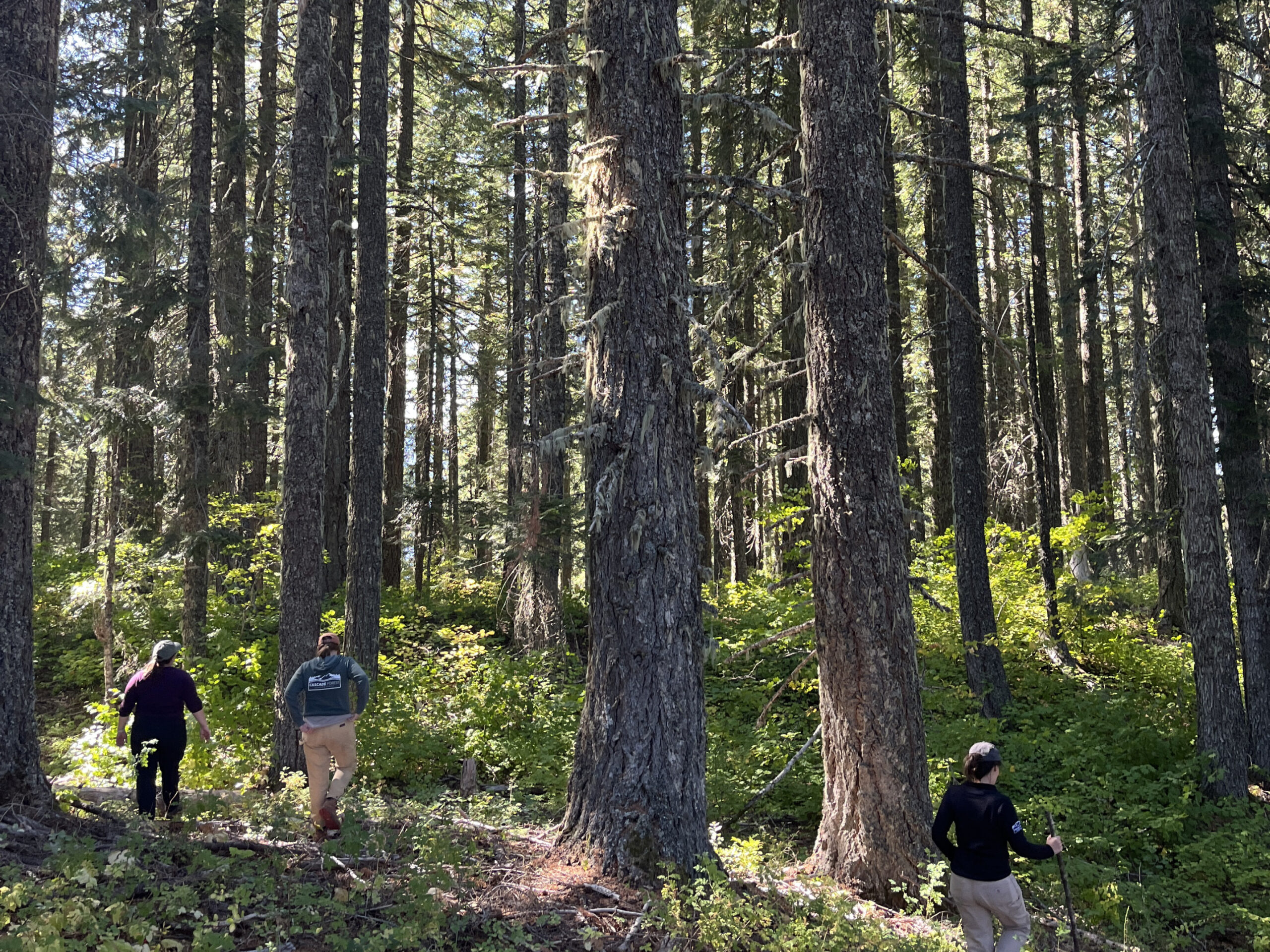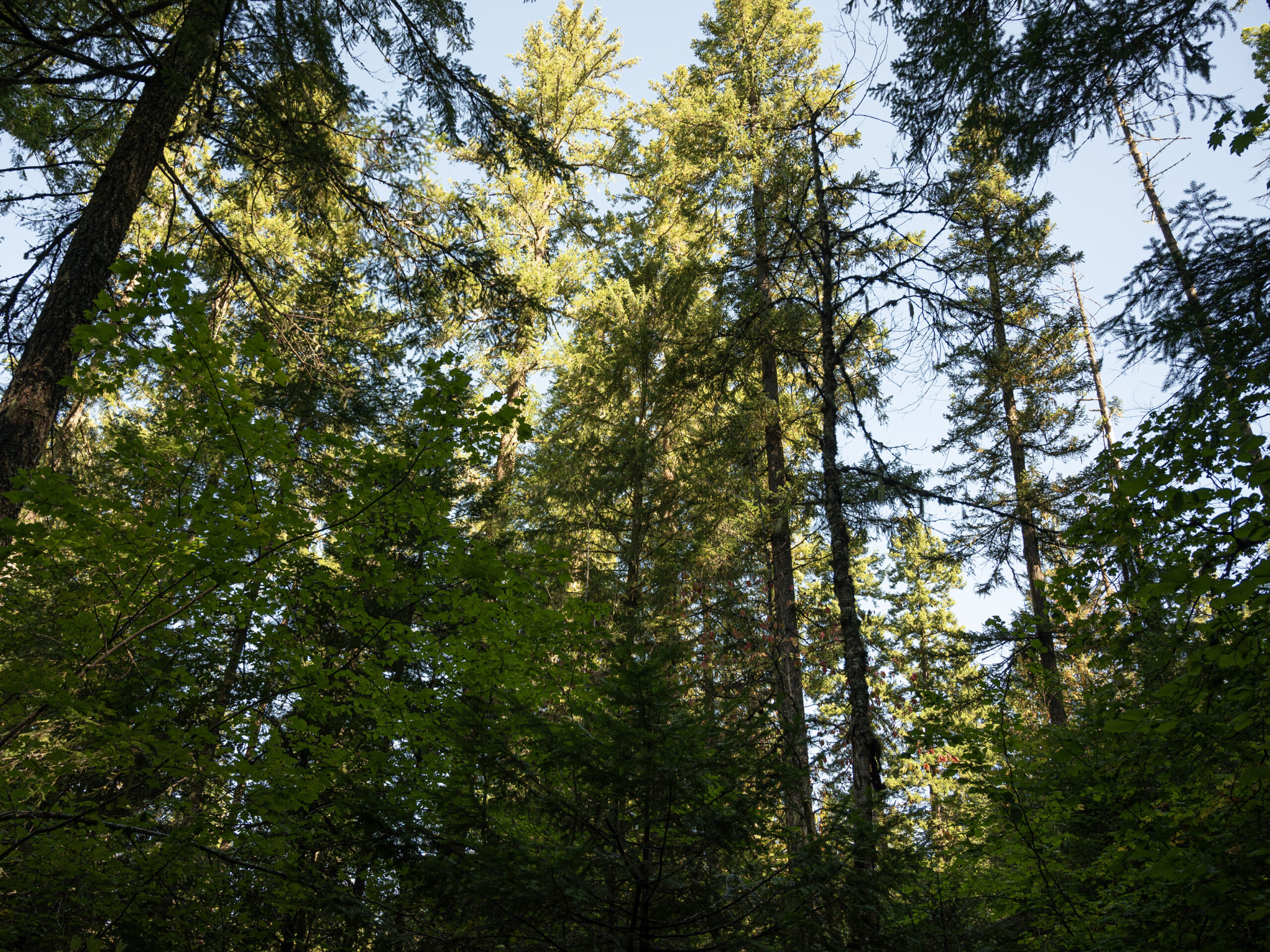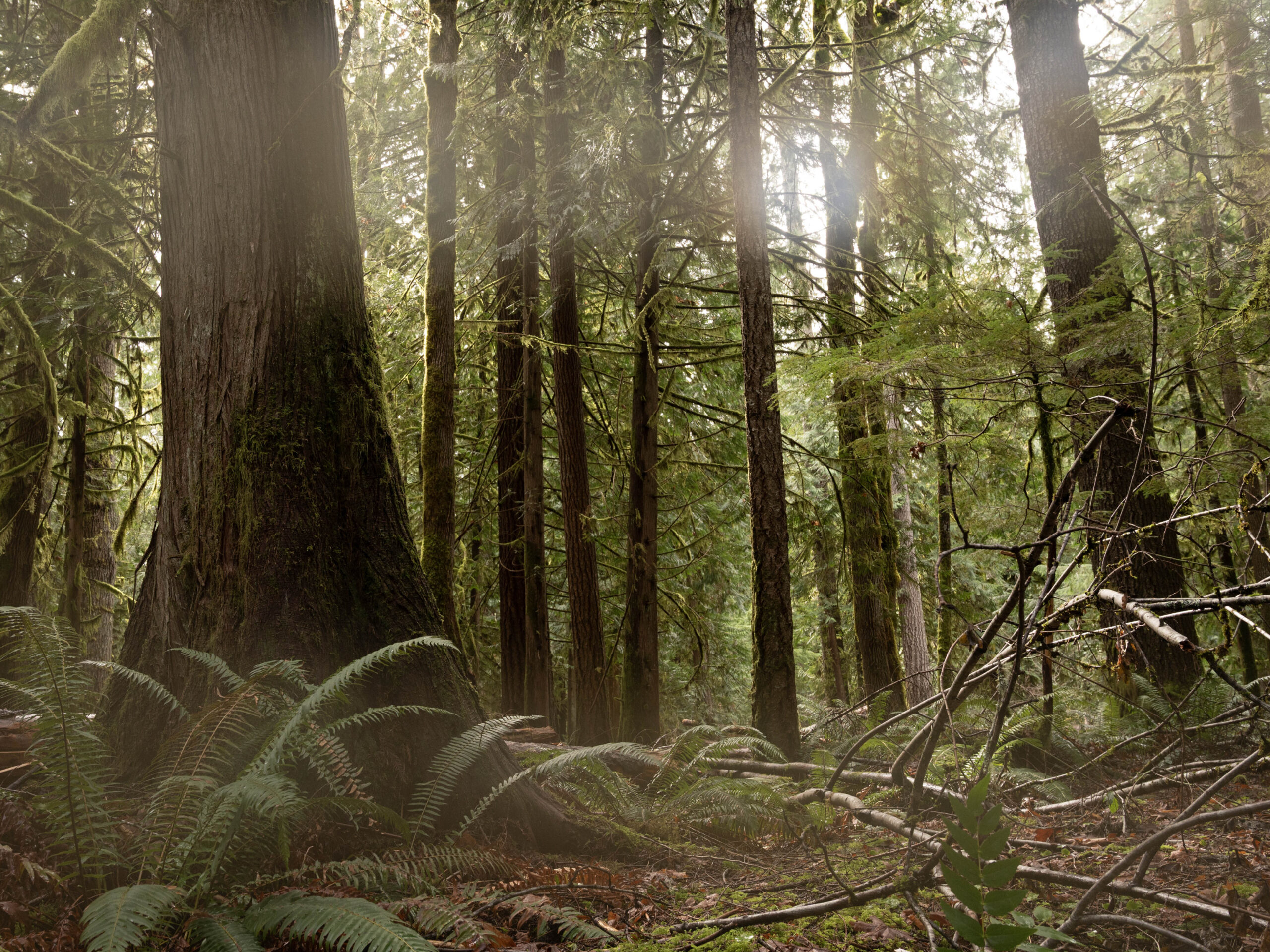The Forest Service has released an Environmental Assessment for the Little White Salmon timber sale for public comment. This project proposes timber harvest and fuels management in 13,249 acres in the Little White Salmon watershed, a diverse and unique transitional forest that sits between wet westside forests and dry eastside forests. The project also includes road decommissioning, repairing unauthorized public-created trails, and repairing stream crossings impacted by abandoned temporary roads.
CFC has been involved in the planning process for the Little White Salmon Project for the last two years. We have helped shape the project over time, working closely with the South Gifford Pinchot Collaborative and the Forest Service.
So far, through our input and the Forest Service’s application of federal directives, 2,351 acres of mature and old-growth forest have been dropped from the project. While strategic thinning and prescribed fire are important tools for building forest resilience, this project proposes timber harvest to a degree that is notably large in scale and intensity, and utilizes experimental methodologies–applying some restoration techniques developed for dry eastside forests to this transitional watershed. The Forest Service will be essentially testing on a large scale whether or not their treatments help this watershed become more resilient to climate change.
We agree with some of the experimentation, but we’re particularly concerned about thinning for fire risk in mature forests, especially those that are already developing some complexity and inherent resilience. From the ecological modeling that has been carried out for this planning area, we expect there might be a temporary reduction in fire risk in certain fire scenarios through some of the thinning work, but we are concerned that these impacts will be short-lived due to re-growth of vegetation and ineffective in the face of high-velocity wind-driven fires. With regards to mature forests, we’re also concerned about the introduction of invasive species (a common result of timber harvest), immediate destruction of arboreal or soil-based habitats currently in use, increased understory temperatures, and decreased understory moisture profiles.
Although the protection of some of the older forests is a major win, there is still more we can do to protect complex mature forests and large trees (unique habitat features) in the watershed.
We hope you’ll join us in asking the Forest Service to:
- Drop the 549 acres of remaining complex mature forests from the harvest plans;
- Protect all Douglas-firs trees with a 30” diameter or more in matrix stands; and
- Provide a no-cut buffer of 1.5 to 2 drip lines on all trees with a 40” diameter or more to protect their root systems from the negative impacts of heavy machinery.
Comments are being accepted through Oct. 31st at this website. The Environmental Assessment and all other project files including specialist reports can be found here.
The process is quick and easy and your comments can help make a difference. If you have any questions please reach out to Ashley at ashley@cascadeforest.org.



